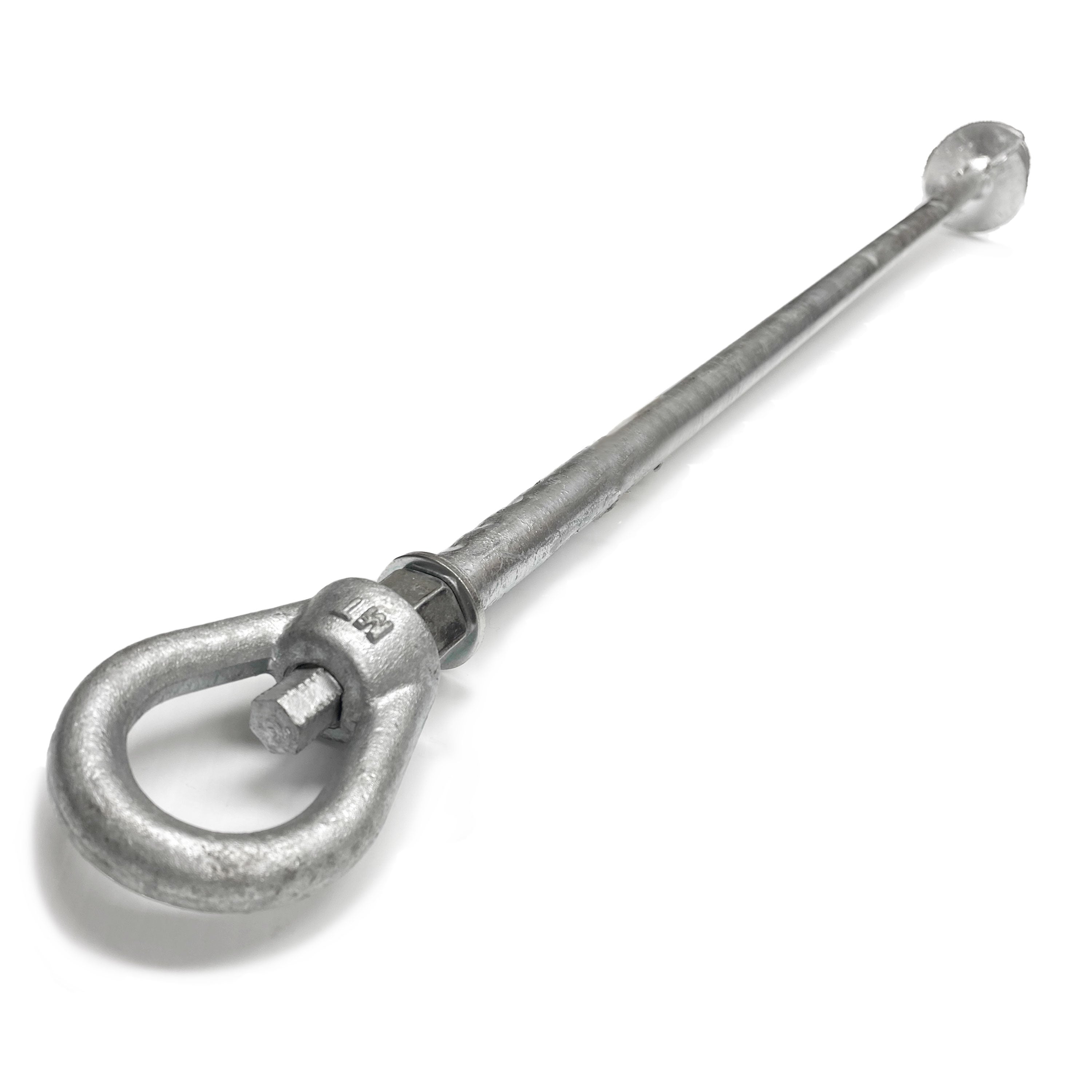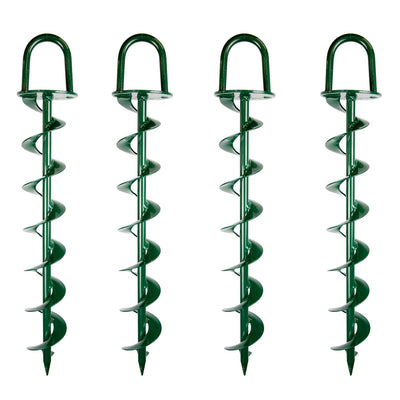Explore the Various Sorts Of Ground Support for Your Following Job
When starting a building or landscape design job, recognizing the numerous kinds of ground anchors offered is essential to guaranteeing both stability and durability (Ground Anchor). From auger anchors, which master diverse soil conditions, to risk supports made for short-term setups, the alternatives are many. Furthermore, concrete and screw supports existing special advantages in certain situations, while deadman anchors are tailored for applications requiring resistance to side forces. The selection of a suitable support kind can substantially influence the overall success of your task, motivating additional exploration into their particular benefits and applications.

Auger Anchors
Auger supports are a preferred choice in numerous building and landscape design projects because of their distinct style and effective securing capabilities. These anchors contain a helical screw-like shaft that is driven right into the ground, enabling a protected and secure hold. The spiral layout promotes simple setup and optimizes resistance versus lateral pressures, making auger anchors specifically effective in applications such as fencing, momentary frameworks, and disintegration control.
The installment process of auger supports is fairly uncomplicated. Auger supports can be easily removed and reused, which includes to their cost-effectiveness and sustainability.
One of the significant advantages of auger anchors is their capability to disperse lots equally throughout the surrounding soil, minimizing the danger of dirt disturbance and minimizing environmental impact. Additionally, they are less prone to heaving or loosening up gradually compared to conventional anchoring approaches. As a result, auger supports are a superb selection for jobs requiring reputable and durable anchoring remedies.

Risk Anchors
When it involves safeguarding structures in a range of outdoor applications, stake anchors supply a uncomplicated and dependable solution. These supports are generally built from durable materials such as steel or aluminum, designed to withstand environmental anxieties while giving optimal stability. Their basic style enables quick installation, making them a perfect option for long-term or temporary anchoring needs.
Risk anchors are particularly valuable in protecting tents, canopies, and other light-weight frameworks against wind and climate. They function by being driven into the ground at an angle, developing a strong hold that withstands pull-out forces - Ground Anchor. The performance of stake supports relies on a number of factors, including dirt type, dampness content, and the angle of installment
For added safety, lots of stake supports come with accessory points for ropes or bands, enabling stress adjustments as necessary. In applications such as landscaping or construction, they can successfully maintain tools or frameworks on unequal surface. In general, stake anchors supply a economical and versatile service for protecting numerous outdoor installments, making them a preferred selection for service providers and do it yourself enthusiasts alike.
Concrete Anchors
Concrete anchors give a durable option for safeguarding structures to concrete surface areas, guaranteeing security and security in various applications. These anchors are crucial for jobs ranging from domestic buildings to large commercial installations. They come in different kinds, including growth supports, adhesive supports, and undercut supports, each designed view it now for particular tons needs and ecological problems.
Adhesive supports utilize high-strength epoxy or resin to bond the anchor to the concrete, offering remarkable load-bearing capabilities, especially in fractured concrete scenarios. Undercut supports develop an unique form within the concrete, giving exceptional holding power, particularly in applications where tensile lots are prevalent.
Selecting the appropriate concrete support includes considering variables such as the weight of the load, the condition of the concrete, and environmental problems. Correct setup methods are vital to guarantee optimal performance and reliability. When implemented properly, concrete supports considerably improve the structural honesty of various tasks, making them essential in contemporary building and construction methods. Comprehending the certain demands of your project will aid in check selecting the best kind of concrete support for the job.
Screw Anchors

Screw anchors are a versatile attaching solution that can be properly employed in a selection of applications where standard concrete anchors may not be adequate. These supports contain a helical layout that enables them to be easily driven into the ground, making them ideal for usage in dirt and other substratums. Their distinct framework gives excellent holding power and resistance to pull-out pressures, making them ideal for various jobs, from landscaping to architectural assistance.
Among the key advantages of screw supports is their ease of setup. They require marginal equipment and can frequently be mounted without the requirement for excavation, which saves both time and labor expenses. Additionally, screw anchors can be removed and reused, offering a lasting remedy for momentary applications.
Screw supports are specifically helpful in locations where dirt conditions are challenging, such as loose or sandy soils. Their capacity check over here to be mounted at differing midsts permits customization based upon specific task requirements. On the whole, screw supports provide a reputable and effective anchoring technique, making them an exceptional option for specialists and engineers looking for reliable options for their jobs.
Deadman Anchors
Deadman anchors work as a robust option for supporting structures in challenging conditions, especially where standard securing approaches might fail. These supports consist of large, heavy things buried underground, which create resistance versus lateral forces. The design commonly entails a straight component, such as a block of concrete or a steel plate, buried in the dirt, to which cables or bands are attached.
The effectiveness of deadman anchors lies in their ability to disperse loads over a bigger location, decreasing the risk of failing in unstable soil problems. They are particularly helpful in applications such as preserving walls, short-term frameworks, and slope stabilization, where dirt activity can endanger the honesty of the structure.
Setup of deadman anchors calls for careful preparation to ensure they are placed at the right deepness and positioning, maximizing their load-bearing ability. While they may require even more labor and material than light-weight supports, their reliability in negative problems makes them vital for long-term jobs. In addition, deadman anchors are versatile and can be adjusted to various applications, making them a go-to option for engineers encountering unique challenges in their tasks.
Final Thought
In recap, choosing the suitable sort of ground anchor is vital for guaranteeing stability and safety in various projects. Auger supports excel in varied soil problems, while stake anchors suit temporary applications. For concrete surface areas, growth and adhesive anchors supply trustworthy choices, and screw anchors supply adaptability in difficult surfaces. Deadman anchors are specifically effective in withstanding lateral pressures for maintaining walls. Cautious factor to consider of these options will certainly enhance project end results and architectural honesty.
In addition, concrete and screw anchors present unique advantages in certain circumstances, while deadman anchors are tailored for applications requiring resistance to lateral forces - Ground Anchor.Auger anchors are a prominent selection in numerous building and landscaping projects due to their distinct style and effective securing capabilities. They come in different kinds, including growth anchors, adhesive supports, and undercut supports, each designed for details lots demands and environmental conditions
Adhesive supports make use of high-strength epoxy or resin to bond the anchor to the concrete, supplying superior load-bearing capacities, especially in split concrete scenarios. Overall, screw supports supply a trustworthy and reliable anchoring technique, making them an outstanding choice for service providers and designers seeking reliable services for their tasks.